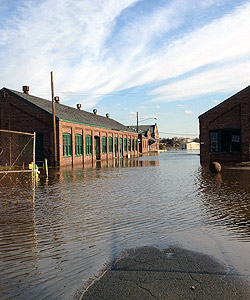Do big winter storms contradict climate change claims and prove that global warming is over or wasn't real to begin with?

NPS photo
While we may use the terms "climate" and "weather" interchangeably, they are two very different things. As Mark Twain put it, "Climate is what we expect, weather is what we get." In terms of climate change, one cold and snowy winter doesn't mean that climate change is over.
"Weather" describes day-to-day conditions, such as temperature, precipitation, humidity, barometric pressure, and winds. "Climate" is the average of these weather conditions over long periods of time. Climate change looks at the overall trends; it does not predict the exact rate that temperatures will rise or mean that there never be localized cold snaps. Recent storms including "Snowmageddon" in Washington, DC, in 2012; deadly tornadoes in 2011; and Hurricane Sandy in 2012 may be harbingers of what's to come: more extreme weather patterns attributable to climate change.
With the 2010 heavy snowstorms in the Washington, DC, area, some declared that climate change was over. But climate scientists tell us that with climate change we can actually expect more severe storms along with more flooding, more drought, and extended heat waves. One cold winter does not by itself change the long-term average (the climate) much. Both the overall climate and weather extremes are a concern for national parks. In October 2012, Hurricane Sandy hit the East Coast and caused damage in many eastern national parks. Many park resources and facilities in parks in New York were damaged, including our iconic Statue of Liberty, which is now closed to visitors until repairs can be made. Storms like Sandy may not be directly attributable to climate change, but the increased frequency of such storms will certainly impact parks.
Last updated: February 3, 2015
